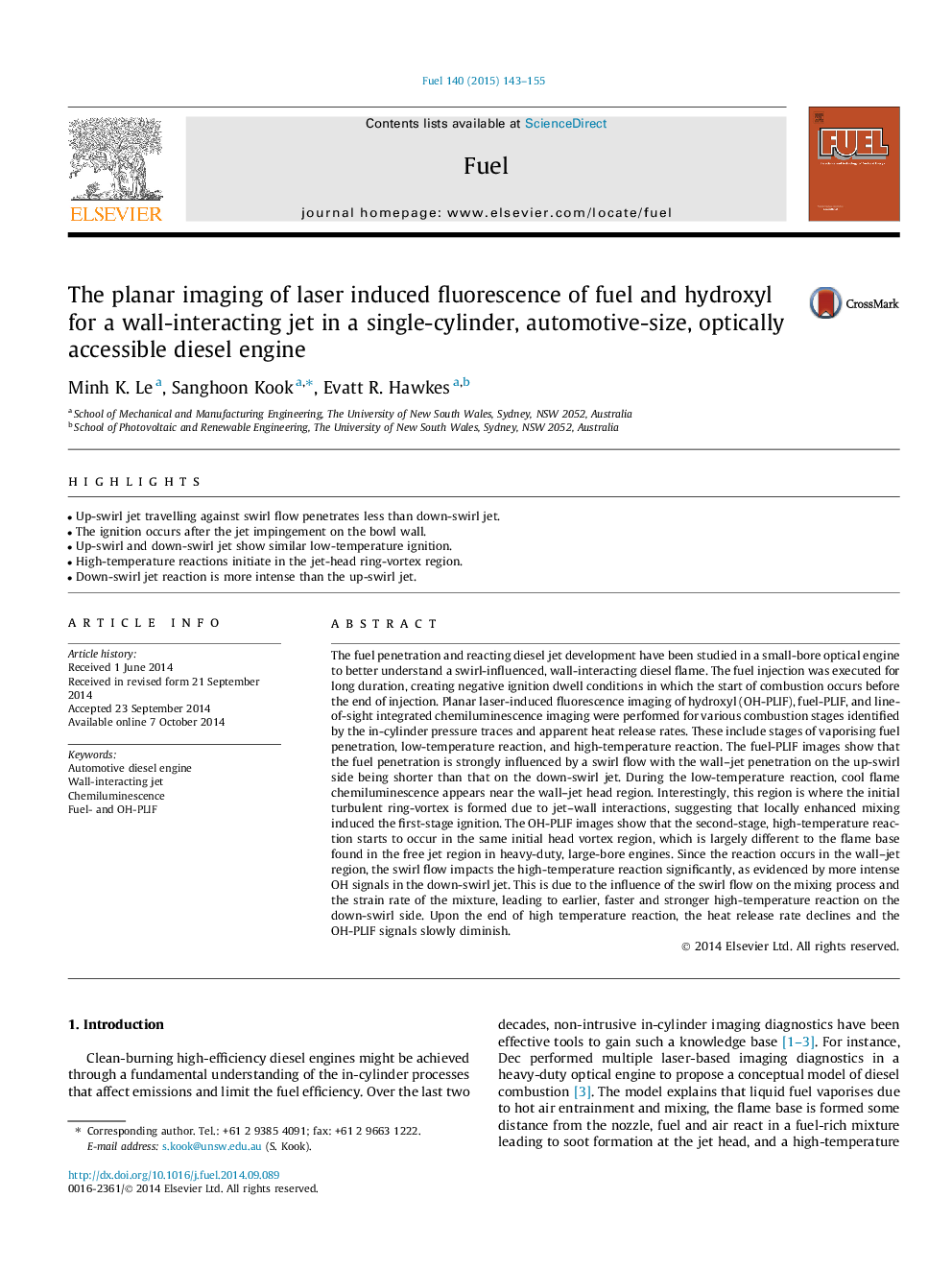| کد مقاله | کد نشریه | سال انتشار | مقاله انگلیسی | نسخه تمام متن |
|---|---|---|---|---|
| 6636152 | 461130 | 2015 | 13 صفحه PDF | دانلود رایگان |
عنوان انگلیسی مقاله ISI
The planar imaging of laser induced fluorescence of fuel and hydroxyl for a wall-interacting jet in a single-cylinder, automotive-size, optically accessible diesel engine
ترجمه فارسی عنوان
تصویر برداری مسطح از فلورسانس سوخت و هیدروکسیل برای لیزر القا شده برای یک جت دیافراگم در یک سیلندر، اندازه خودرو، موتور دیزلی قابل دسترس
دانلود مقاله + سفارش ترجمه
دانلود مقاله ISI انگلیسی
رایگان برای ایرانیان
کلمات کلیدی
موضوعات مرتبط
مهندسی و علوم پایه
مهندسی شیمی
مهندسی شیمی (عمومی)
چکیده انگلیسی
The fuel penetration and reacting diesel jet development have been studied in a small-bore optical engine to better understand a swirl-influenced, wall-interacting diesel flame. The fuel injection was executed for long duration, creating negative ignition dwell conditions in which the start of combustion occurs before the end of injection. Planar laser-induced fluorescence imaging of hydroxyl (OH-PLIF), fuel-PLIF, and line-of-sight integrated chemiluminescence imaging were performed for various combustion stages identified by the in-cylinder pressure traces and apparent heat release rates. These include stages of vaporising fuel penetration, low-temperature reaction, and high-temperature reaction. The fuel-PLIF images show that the fuel penetration is strongly influenced by a swirl flow with the wall-jet penetration on the up-swirl side being shorter than that on the down-swirl jet. During the low-temperature reaction, cool flame chemiluminescence appears near the wall-jet head region. Interestingly, this region is where the initial turbulent ring-vortex is formed due to jet-wall interactions, suggesting that locally enhanced mixing induced the first-stage ignition. The OH-PLIF images show that the second-stage, high-temperature reaction starts to occur in the same initial head vortex region, which is largely different to the flame base found in the free jet region in heavy-duty, large-bore engines. Since the reaction occurs in the wall-jet region, the swirl flow impacts the high-temperature reaction significantly, as evidenced by more intense OH signals in the down-swirl jet. This is due to the influence of the swirl flow on the mixing process and the strain rate of the mixture, leading to earlier, faster and stronger high-temperature reaction on the down-swirl side. Upon the end of high temperature reaction, the heat release rate declines and the OH-PLIF signals slowly diminish.
ناشر
Database: Elsevier - ScienceDirect (ساینس دایرکت)
Journal: Fuel - Volume 140, 15 January 2015, Pages 143-155
Journal: Fuel - Volume 140, 15 January 2015, Pages 143-155
نویسندگان
Minh K. Le, Sanghoon Kook, Evatt R. Hawkes,
